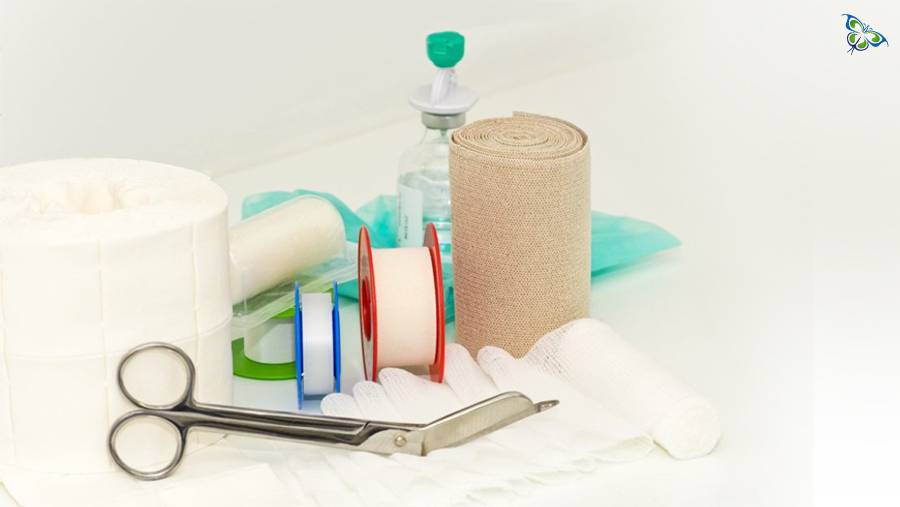
Hello
Select Address

The wound care industry was for long predominated by ‘gauze dressings’ – they were commonly used for dressing wounds of whichever type and degree they would be! Today the wound dressing industry is a lot more advanced than before with dressing choices. The dressing variants are manufactured pertaining to the needs and condition of each type of wound.
The presentation of a wound correctly determines the choice of the dressing variant. The factors that would impact your choice of wound care are –
Absorptive Dressings – when are they used?
This is quite evident from the nomenclature of the dressing – they are indicated for wounds that contain a high level of drainage. Quite evidently, for highly exudating wounds, if the dressing is not absorbent enough, the surrounding tissues along with the wound become macerated. This impedes the healing process and might be perilous for the skin and the area too.
So, how would you know whether your dressing is absorptive enough?
Primarily, it needs your inspection. If you find a lot of wound maceration in between dressing changes and/or the drainage is seeping through or around the wound, your dressing isn’t absorptive enough!
Generally, wounds that have venous stasis, typically call for an absorptive dressing. Such wounds not only need proper dressing material but also a certain amount of compression to improve the venous flow and control the amount of edema too.
Which wound dressings are absorptive ones?
Absorptive dressings are multilayer dressings and these layers consist of adherent and semi-adherent layers to manage the exudate. Controlling the wound exudate is not the only job of those absorptive layers – they need to minimize adherence to the wound too. Therefore, absorptive layers are usually made up of cotton, cellulose, and rayon – they catalyze the process of absorption well
Calcium alginates – They are made from natural fibers, the ones that are derived from seaweed. This makes them highly absorptive. Post the absorption of exudates from the wound, the alginate dressings form a gel-like covering on the wound to create a moist environment for the healing process.
Foam dressings – These dressings again (as is evident from their name itself) provide a moisture-laden environment for the wound. Wounds in such cases have a moderate to heavy exudate. Foam dressings are made of polyurethane – some may adhere directly to the wound, whereas, some require a secondary dressing.
Hydrofibers – Hydrofiber dressing is developed from hydrocolloid fibers. This hydrocolloid bears properties of absorbency and is applied directly to the highly exudating wound. Hydrofibers convert into a gel formation on coming in contact with the wound exudate.
In a nutshell, absorptive dressings are ‘moisture-retaining’ dressings that hold back the moisture in the wound bed. In this context, it goes without mentioning that the moisture-retention theory was advocated post the 1960s. In earlier times, 'drying it up' was emphasized along with the removal of foreign bodies before the application of any dressing cover.
However, moisture preservation is the present-day norm. So, what about dry wounds? Here’s where the role of occlusive dressings come into play.
A word about Occlusive Dressings
Occlusive dressings are used in wounds where a “moisture-donation” is recommended. It is now known to the medical world that a dry wound bed cannot pass smoothly through the inflammatory and developmental stages of the wound.
The primary purpose that occlusive dressings cater to is – sealing the natural moisture within the wound bed by being less porous or permeable. Hydrogel dressing is a good example of occlusive dressing and a hydrogel fill is recommended for stage III or stage IV pressure ulcers.